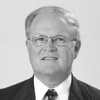When Peoria's civic leaders visited Louisville, Ky., last year as part of a Vision 2020 economic development benchmarking trip, they were told the story of what happened when a reporter from a national news publication recently labeled the community a "sleepy city on the river."
The statement generated an intense reaction from the people of Louisville. According to the confident community, the reporter couldn't have been more wrong. What's noteworthy for the purpose of this article is the community pride the people of Louisville shared for their "sleepy city on the river." Their reaction was united and strong because of their shared common vision for the community.
More recently, Peoria Journal Star columnist Phil Luciano chronicled a reference to Peoria by a New York Times reporter. The problem was, the reference labeled Peoria a "faded urban outpost."
A strong reaction to the reporter's negative label would've been representative of a citizen base that took great pride in their community, but it also would've been indicative of a shared common vision for what the community was capable of.
For many years, sage management analysts have claimed that vision is the most sustainable advantage an organization can develop. Shouldn't that same theory apply when the context is a community rather than an organization?
Vision provides clarity to act and the passion to weather downturns and rough cycles. It inspires confidence, provides a lens through which to interpret changes, and it connects and binds us.
In essence, the challenge posed is how can we develop and communicate common visions for change in our community?
For the greater Peoria region, this is a question we can't afford to leave unanswered. Our community is certainly undergoing great change. To those engaged in implementing the many change and growth initiatives underway throughout the community, the vision runs deep. This civic leadership is inspiring and absolutely necessary, but it isn't enough.
The greater Peoria region must build upon the inspirational civic vision of innovative community growth region. It's time to take the vision beyond its comfort zone and communicate our goals and initiatives to the entire community in a way that makes it clear how each family, each business, and each individual can benefit. Furthermore, it's important that we integrate the concerns of our broad citizen base into the community vision so it more accurately reflects the needs of the greater Peoria region.
As one change management consultant has written, the challenge is to "make every cell a holder of the genetic code." Our community can't afford to leave our vision for growth solely in the hands of the visionaries enacting change in our community. Each member of our community must be a keeper of the vision.
This article doesn't have the answers, but it does present the challenge. Peoria's civic leadership has done a tremendous job of enacting change, and the vision is quite real to many in the community. The challenge facing us now is to communicate and broaden the vision so our entire community has the option to subscribe to the vision. When that happens, the changes we've been working for will start to become clear in a very real way. The vision that guides us will bind us, and our community will share its potential together.
And the next time a reporter labels this community, perhaps our reaction will be different. IBI

